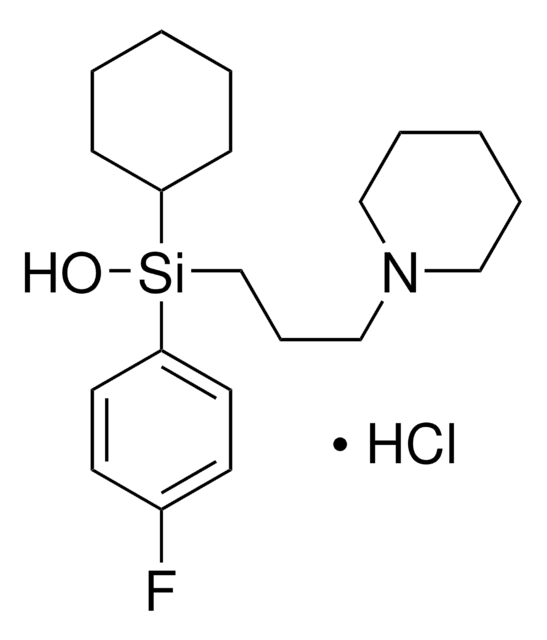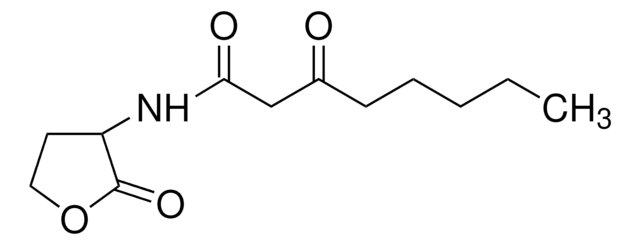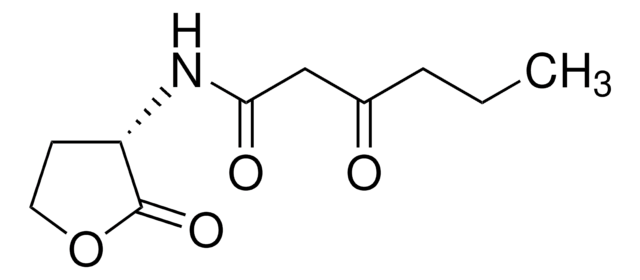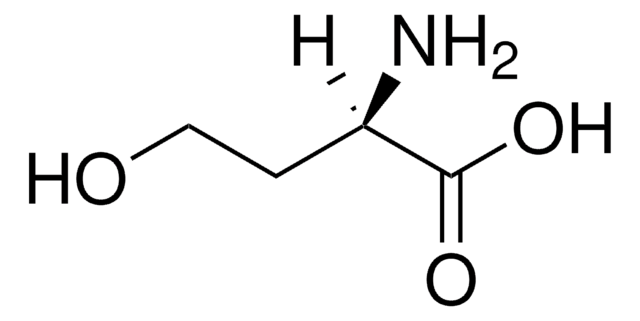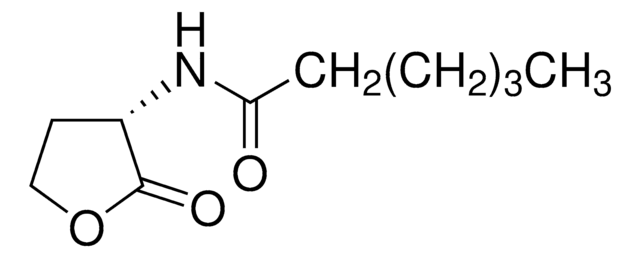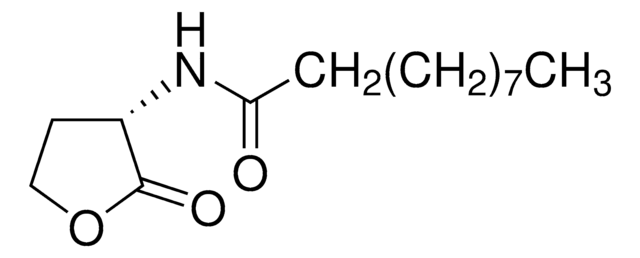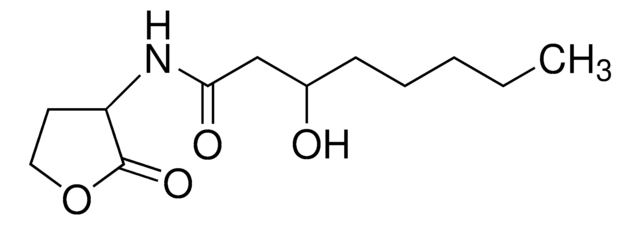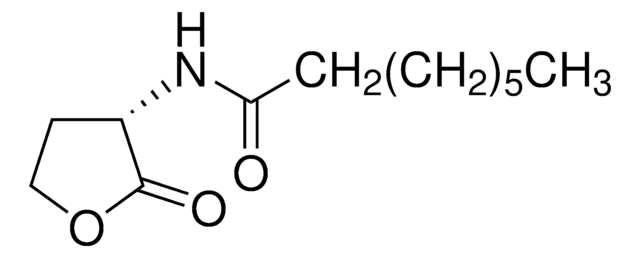Kluczowe dokumenty
K3255
N-(β-Ketocaproyl)-DL-homoserine lactone
analytical standard
Synonim(y):
N-(3-Oxohexanoyl)-DL-homoserine lactone
About This Item
Polecane produkty
klasa czystości
analytical standard
Poziom jakości
metody
HPLC: suitable
gas chromatography (GC): suitable
przydatność
suitable for manufacturing use
Zastosowanie
forensics and toxicology
pharmaceutical (small molecule)
veterinary
Format
neat
temp. przechowywania
−20°C
ciąg SMILES
CCCC(=O)CC(=O)NC1CCOC1=O
InChI
1S/C10H15NO4/c1-2-3-7(12)6-9(13)11-8-4-5-15-10(8)14/h8H,2-6H2,1H3,(H,11,13)
Klucz InChI
YRYOXRMDHALAFL-UHFFFAOYSA-N
Zastosowanie
Kod klasy składowania
11 - Combustible Solids
Klasa zagrożenia wodnego (WGK)
WGK 3
Temperatura zapłonu (°F)
Not applicable
Temperatura zapłonu (°C)
Not applicable
Środki ochrony indywidualnej
Eyeshields, Gloves, type N95 (US)
Wybierz jedną z najnowszych wersji:
Masz już ten produkt?
Dokumenty związane z niedawno zakupionymi produktami zostały zamieszczone w Bibliotece dokumentów.
Klienci oglądali również te produkty
Nasz zespół naukowców ma doświadczenie we wszystkich obszarach badań, w tym w naukach przyrodniczych, materiałoznawstwie, syntezie chemicznej, chromatografii, analityce i wielu innych dziedzinach.
Skontaktuj się z zespołem ds. pomocy technicznej